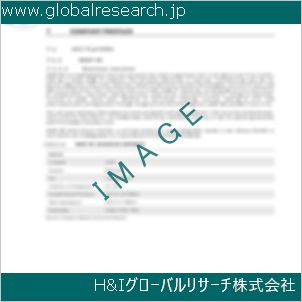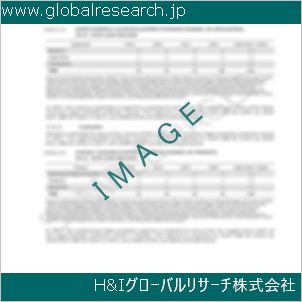Table of Contents
1 Industry Overview of P-Toluidine
1.1 Definition and Specifications of P-Toluidine
1.1.1 Definition of P-Toluidine
1.1.2 Specifications of P-Toluidine
1.2 Classification of P-Toluidine
1.3 Applications of P-Toluidine
1.3.1 Nuclear Application
1.3.2 Non-Nuclear Application
1.4 Industry Chain Structure of P-Toluidine
1.5 Industry Overview and Major Regions Status of P-Toluidine
1.5.1 Industry Overview of P-Toluidine
1.5.2 Global Major Regions Status of P-Toluidine
1.6 Industry Policy Analysis of P-Toluidine
1.7 Industry News Analysis of P-Toluidine
2 Manufacturing Cost Structure Analysis of P-Toluidine
2.1 Raw Material Suppliers and Price Analysis of P-Toluidine
2.2 Equipment Suppliers and Price Analysis of P-Toluidine
2.3 Labor Cost Analysis of P-Toluidine
2.4 Other Costs Analysis of P-Toluidine
2.5 Manufacturing Cost Structure Analysis of P-Toluidine
2.6 Manufacturing Process Analysis of P-Toluidine
3 Technical Data and Manufacturing Plants Analysis of P-Toluidine
3.1 Capacity and Commercial Production Date of Global P-Toluidine Major Manufacturers in 2023
3.2 Manufacturing Plants Distribution of Global P-Toluidine Major Manufacturers in 2023
3.3 R&D Status and Technology Source of Global P-Toluidine Major Manufacturers in 2023
3.4 Raw Materials Sources Analysis of Global P-Toluidine Major Manufacturers in 2023
4 Capacity, Production and Revenue Analysis of P-Toluidine by Regions, Types and Manufacturers
4.1 Global Capacity, Production and Revenue of P-Toluidine by Regions 2019-2024
4.2 Global and Major Regions Capacity, Production, Revenue and Growth Rate of P-Toluidine 2019-2024
4.3 Global Capacity, Production and Revenue of P-Toluidine by Types 2019-2024
4.4 Global Capacity, Production and Revenue of P-Toluidine by Manufacturers 2019-2024
5 Price, Cost, Gross and Gross Margin Analysis of P-Toluidine by Regions, Types and Manufacturers
5.1 Price, Cost, Gross and Gross Margin Analysis of P-Toluidine by Regions 2019-2024
5.2 Price, Cost, Gross and Gross Margin Analysis of P-Toluidine by Types 2019-2024
5.3 Price, Cost, Gross and Gross Margin Analysis of P-Toluidine by Manufacturers 2019-2024
6 Consumption Volume, Consumption Value and Sale Price Analysis of P-Toluidine by Regions, Types and Applications
6.1 Global Consumption Volume and Consumption Value of P-Toluidine by Regions 2019-2024
6.2 Global and Major Regions Consumption Volume, Consumption Value and Growth Rate of P-Toluidine 2019-2024
6.3 Global Consumption Volume and Consumption Value of P-Toluidine by Types 2019-2024
6.4 Global Consumption Volume and Consumption Value of P-Toluidine by Applications 2019-2024
6.5 Sale Price of P-Toluidine by Regions 2019-2024
6.6 Sale Price of P-Toluidine by Types 2019-2024
6.7 Sale Price of P-Toluidine by Applications 2019-2024
6.8 Market Share Analysis of P-Toluidine by Different Sale Price Levels
7 Supply, Import, Export and Consumption Analysis of P-Toluidine
7.1 Supply, Consumption and Gap of P-Toluidine 2019-2024
7.2 Global Capacity, Production, Price, Cost, Revenue, Supply, Import, Export and Consumption of P-Toluidine 2019-2024
7.3 USA Capacity, Production, Price, Cost, Revenue, Supply, Import, Export and Consumption of P-Toluidine 2019-2024
7.4 EU Capacity, Production, Price, Cost, Revenue, Supply, Import, Export and Consumption of P-Toluidine 2019-2024
7.5 China Capacity, Production, Price, Cost, Revenue, Supply, Import, Export and Consumption of P-Toluidine 2019-2024
7.6 Japan Capacity, Production, Price, Cost, Revenue, Supply, Import, Export and Consumption of P-Toluidine 2019-2024
8 Major Manufacturers Analysis of P-Toluidine
8.1 Manufacturer One
8.1.1 Company Profile
8.1.2 Product Picture and Specifications
8.1.2.1 Type I
8.1.2.2 Type II
8.1.2.3 Type III
8.1.3 Capacity, Production, Price, Cost, Gross and Revenue
8.1.4 Contact Information
8.2 Manufacturer Two
8.2.1 Company Profile
8.2.2 Product Picture and Specifications
8.2.2.1 Type I
8.2.2.2 Type II
8.2.2.3 Type III
8.2.3 Capacity, Production, Price, Cost, Gross and Revenue
8.2.4 Contact Information
8.3 Manufacturer Three
8.3.1 Company Profile
8.3.2 Product Picture and Specifications
8.3.2.1 Type I
8.3.2.2 Type II
8.3.2.3 Type III
8.3.3 Capacity, Production, Price, Cost, Gross and Revenue
8.3.4 Contact Information
8.4 Manufacturer Four
8.4.1 Company Profile
8.4.2 Product Picture and Specifications
8.4.2.1 Type I
8.4.2.2 Type II
8.4.2.3 Type III
8.4.3 Capacity, Production, Price, Cost, Gross and Revenue
8.4.4 Contact Information
8.5 Manufacturer Five
8.5.1 Company Profile
8.5.2 Product Picture and Specifications
8.5.2.1 Type I
8.5.2.2 Type II
8.5.2.3 Type III
8.5.3 Capacity, Production, Price, Cost, Gross and Revenue
8.5.4 Contact Information
…
9 Marketing Trader or Distributor Analysis of P-Toluidine
9.1 Marketing Channels Status of P-Toluidine
9.2 Traders or Distributors with Contact Information of P-Toluidine by Regions
9.3 Ex-work Price, Channel Price and End Buyer Price Analysis of P-Toluidine
9.4 Regional Import, Export and Trade Analysis of P-Toluidine
10 Industry Chain Analysis of P-Toluidine
10.1 Upstream Major Raw Materials Suppliers Analysis of P-Toluidine
10.1.1 Major Raw Materials Suppliers with Contact Information Analysis of P-Toluidine
10.1.2 Major Raw Materials Suppliers with Supply Volume Analysis of P-Toluidine by Regions
10.2 Upstream Major Equipment Suppliers Analysis of P-Toluidine
10.2.1 Major Equipment Suppliers with Contact Information Analysis of P-Toluidine
10.2.2 Major Equipment Suppliers with Product Pictures Analysis of P-Toluidine by Regions
10.3 Downstream Major Consumers Analysis of P-Toluidine
10.3.1 Major Consumers with Contact Information Analysis of P-Toluidine
10.3.2 Major Consumers with Consumption Volume Analysis of P-Toluidine by Regions
10.4 Supply Chain Relationship Analysis of P-Toluidine
11 Development Trend of Analysis of P-Toluidine
11.1 Capacity, Production and Revenue Forecast of P-Toluidine by Regions and Types
11.1.1 Global Capacity, Production and Revenue of P-Toluidine by Regions 2024-2029
11.1.2 Global and Major Regions Capacity, Production, Revenue and Growth Rate of P-Toluidine 2024-2029
11.1.3 Global Capacity, Production and Revenue of P-Toluidine by Types 2024-2029
11.2 Consumption Volume and Consumption Value Forecast of P-Toluidine by Regions, Types and Applications
11.2.1 Global Consumption Volume and Consumption Value of P-Toluidine by Regions 2024-2029
11.2.2 Global and Major Regions Consumption Volume, Consumption Value and Growth Rate of P-Toluidine 2024-2029
11.2.3 Global Consumption Volume and Consumption Value of P-Toluidine by Types 2024-2029
11.2.4 Global Consumption Volume and Consumption Value of P-Toluidine by Applications 2024-2029
11.3 Supply, Import, Export and Consumption Forecast of P-Toluidine
11.3.1 Supply, Consumption and Gap of P-Toluidine 2024-2029
11.3.2 Global Capacity, Production, Price, Cost, Revenue, Supply, Import, Export and Consumption of P-Toluidine 2024-2029
11.3.3 USA Capacity, Production, Price, Cost, Revenue, Supply, Import, Export and Consumption of P-Toluidine 2024-2029
11.3.4 EU Capacity, Production, Price, Cost, Revenue, Supply, Import, Export and Consumption of P-Toluidine 2024-2029
11.3.5 China Capacity, Production, Price, Cost, Revenue, Supply, Import, Export and Consumption of P-Toluidine 2024-2029
11.3.6 Japan Capacity, Production, Price, Cost, Revenue, Supply, Import, Export and Consumption of P-Toluidine 2024-2029
12 New Project Investment Feasibility Analysis of P-Toluidine
12.1 New Project SWOT Analysis of P-Toluidine
12.2 New Project Investment Feasibility Analysis of P-Toluidine
13 Conclusion of the Global P-Toluidine (CAS 106-49-0) Industry 2024 Market Research Report
| ※参考情報 P-トルイジン(p-Toluidine)は、工業化学において重要な化合物であり、特に染料や医薬品の原料として広く利用されています。CAS番号は106-49-0で、化学式はC7H9Nです。この化合物は、トルエンの一種であり、アミンの一種でもあります。 P-トルイジンは、香ばしいにおいを持ち、無色または淡黄色の液体として存在します。常温では比較的安定ですが、高温にさらされると分解することがあります。水には少し溶けますが、有機溶媒にはよく溶ける性質があります。この特性は、様々な用途において非常に便利です。例えば、P-トルイジンは親水性と疎水性の両方を持っているため、さまざまな反応に参加することが可能です。 P-トルイジンは、いくつかの異性体を持っていますが、その中でもp位(パラ位)の置換基を持つトルイジンは、特異な性質を有しています。代表的な異性体には、o-トルイジン(ortho-toluidine)やm-トルイジン(meta-toluidine)があり、それぞれ異なる特性や応用がありますが、P-トルイジンは特に化学工業において重要視されています。 工業的には、P-トルイジンは主に染料の合成に用いられます。特に、アゾ染料や酸性染料の製造において、伴う化学反応において基礎的な役割を果たします。また、化学合成の中間体としても利用されます。例えば、P-トルイジンは、ポリウレタンやメラミン系樹脂のような高分子材料の製造においても重要です。これにより、P-トルイジンの需要は安定しており、多くの化学工場で生産されています。 さらに、P-トルイジンは医薬品、特にアミン系の薬剤の原料としても広く使用されています。抗生物質や抗炎症剤といった医薬品の合成において、P-トルイジンは効果的な前駆体として機能します。これにより、医薬品産業においてもその需要が存在します。 P-トルイジンを扱う際には、注意が必要です。国際的には、P-トルイジンは毒性物質として分類されており、特に長期間の暴露が健康に対するリスクをもたらすとされています。例えば、P-トルイジンは潜在的な発ガン物質として認識されており、扱う際には適切な安全対策を講じることが求められます。これには、防護具の着用や換気の確保などが含まれます。 また、P-トルイジンの代替品や製造プロセスの改善に関する研究も進んでいます。環境への影響を最小限に抑えるため、持続可能な化学プロセスの開発が重視されており、P-トルイジンの合成方法や使用方法の見直しが行われています。このような関連技術の進化は、より安全で環境に優しい製品の開発へとつながると考えられています。 総じて、P-トルイジンは重要な工業原料として、その特性や応用分野において多岐にわたる役割を果たしています。今後の産業発展や環境保護の観点からも、その取り扱いと利用方法についての研究が進められることが期待されています。 |
❖ 免責事項 ❖
http://www.globalresearch.jp/disclaimer












